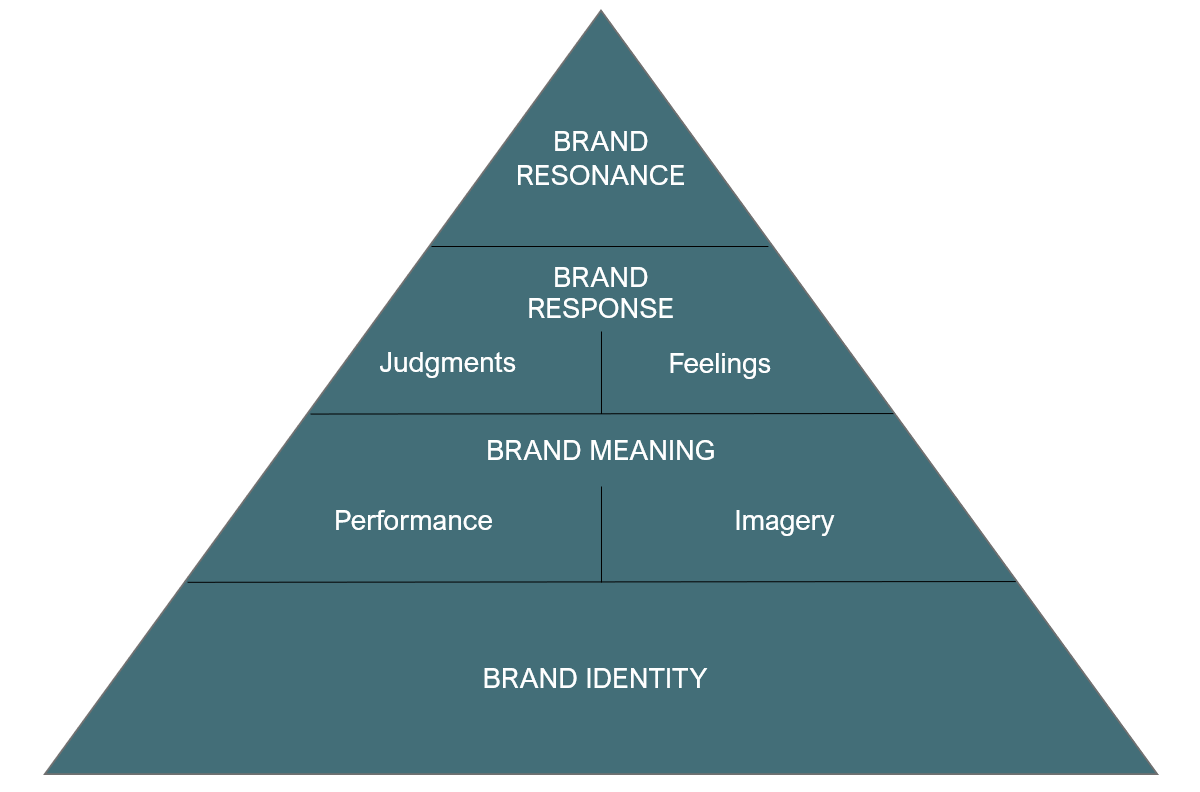What is Brand Equity? Why is it Important?
Brand Equity almost refers to the reputation of a brand built on customers’ perceptions.
Confirmation bias says that people interpret information in a way that confirms their own perceptions. So, a strong Brand Equity brings critical advantages for brands and businesses.
- Loyalty advantage: Customers will trust you more and will continue buying from you.
- Price advantage: Even without proven superiority, customers will accept higher prices for your brand.
- Launch penetration advantage: Customers, players in distribution channels, and employees will perceive your chances of being successful higher and act accordingly.
- Marketing advantage: Brand Equity functions as a magnifier in your communication with customers. It is the heritage that either undermines or underlines your messages.
- Strategic advantage: Companies want to establish partnerships with you, which in turn contribute to your brand equity.
Keller’s Brand Equity Pyramid: 4 Steps to Build Brand Equity
Kevin Lane Keller’s (Marketing Professor at Tuck School of Business) Brand Equity Pyramid, also known as Customer-Based Brand Equity (CBBE) is a tool to create robust brand equity.
The main point behind the model is that you must manage how your target customers think and feel about your brand. Therefore, Keller’s BEP helps you specify almost every aspect of your brand so that customers think, feel and act desirably.

Model answers 4 inherent questions that will be asked, sometimes subconsciously, by target customers:
1. “Who are you?” -> Brand Identity
The first step is creating a correct brand perception at the introduction. It is the fundamental step and supports the rest of the pyramid.
Application:
- Determine your target customer segment.
- Understand their needs (related to your brand and its category).
- Define how they meet their needs (define the market).
- Analyze your customers’ decision-making process and clarify what makes customers choose one brand over the others.
- Decide how your brand distinguishes itself from its competitors to be chosen.
For a detailed understanding, you can read our article Unique Selling Proposition: What Makes Your Product/Service Stand Out?
2. “What are you?” -> Brand Meaning
The second step is making customers understand what your brand does to meet their needs and expectations. Brand meaning has two critical components: performance and imagery:
- Performance refers to how well your brand meets customer’s needs. Keller states 5 critical factors that define performance:
- Product features
- Reliability
- Customer service
- Style and design
- Price
- Imagery refers to your brand’s image as if it is a human being. How your brand is perceived by your customers can be affected by every aspect of your communication, even by lack of your communication. Be very careful.
Application:
- Picture journey of your customers
- Identify your customers’ pain points
- Select which pain points you will focus on and how
- Tailor your communication considering your target persona
For a detailed understanding, you can read our articles How to Design an Effective Customer Journey to Relieve Your Customers’ Pains? and How to Create a Buyer Persona?.
3. “What about you?” -> Brand Response
The third step is shaping your customers’ responses to your brand. Keller’s BEP categorizes responses into two: judgments and feelings. According to the model, customer judgments are grouped into 4; and, there are 6 positive feelings about brands.
Judgments:
- Quality: perceived and actual
- Credibility: expertise, trustworthiness, and likability
- Consideration: relevance
- Superiority: comparison against alternatives
Positive feelings:
- Excitement
- Fun
- Security
- Self-respect
- Social approval
- Warmth
Application:
We have deeply analyzed the topic in How to Innovate Services and Products via Empathy Mapping?. Use empathy mapping and tailor your services, products, and communication accordingly to shape the Brand Response in alignment with your objectives.
4. “What about you and me?” -> Brand Resonance
The final step is emotionally bonding with your customers. Undoubtedly, this is the most difficult and desired part. By achieving brand resonance, you will have advocates, not just customers.
Brand resonance has four compartments:
- Behavioral loyalty: Your customers regularly buy from you.
- Attitudinal attachment: Your customers perceive your brand as special.
- Sense of community: Your customers see your brand and related people (other customers, employees, etc.) as a community that they feel part of.
- Active engagement: Your customers are actively engaged with your brand, communication, and activities.
Application:
Building emotional bonding has no static formula, as humor has no universal rules. Rather than stating steps of emotional bonding, we want to suggest you read the book Lovemarks, by Kevin Roberts. He gives lots of real-life examples and tactics that can be used to strengthen your brand’s resonance with your customers.
Conclusion
Strong brand equity creates important and inimitable advantages, such as loyalty and advocacy, against competitors. To understand the level of your brand equity and improve it, you can use Keller’s Brand Equity Pyramid.
Contact us to assess your brand equity and strengthen it.



